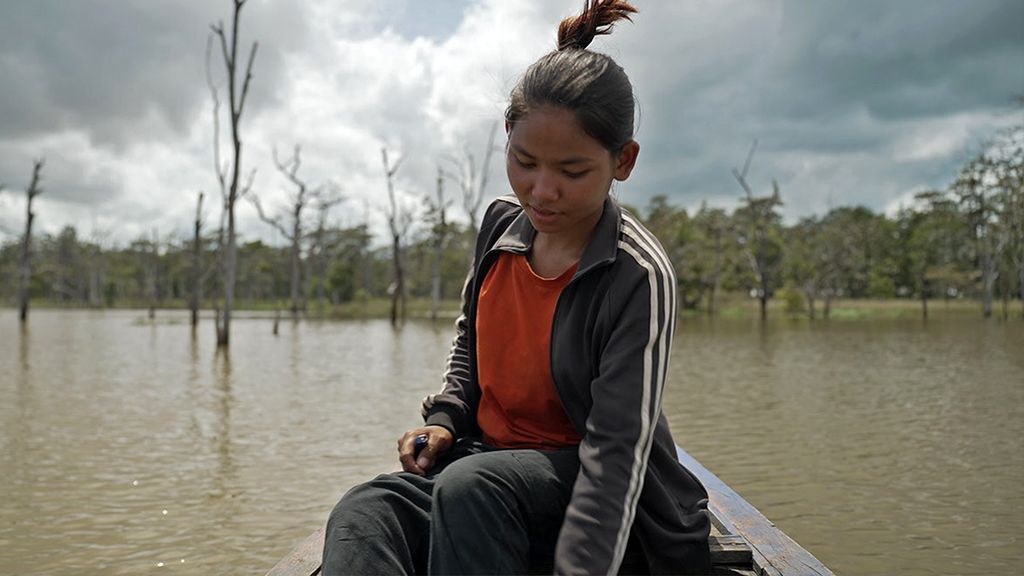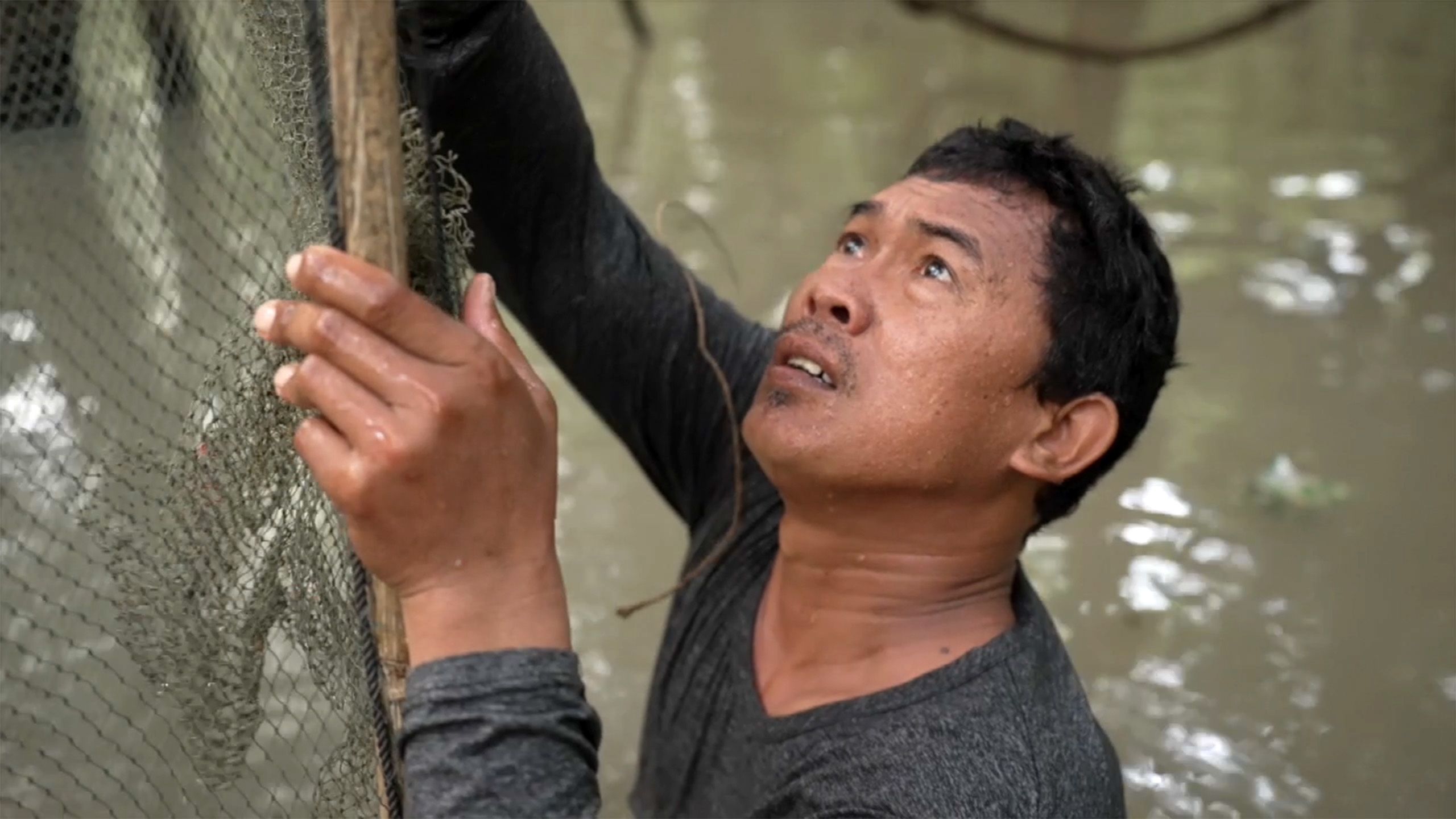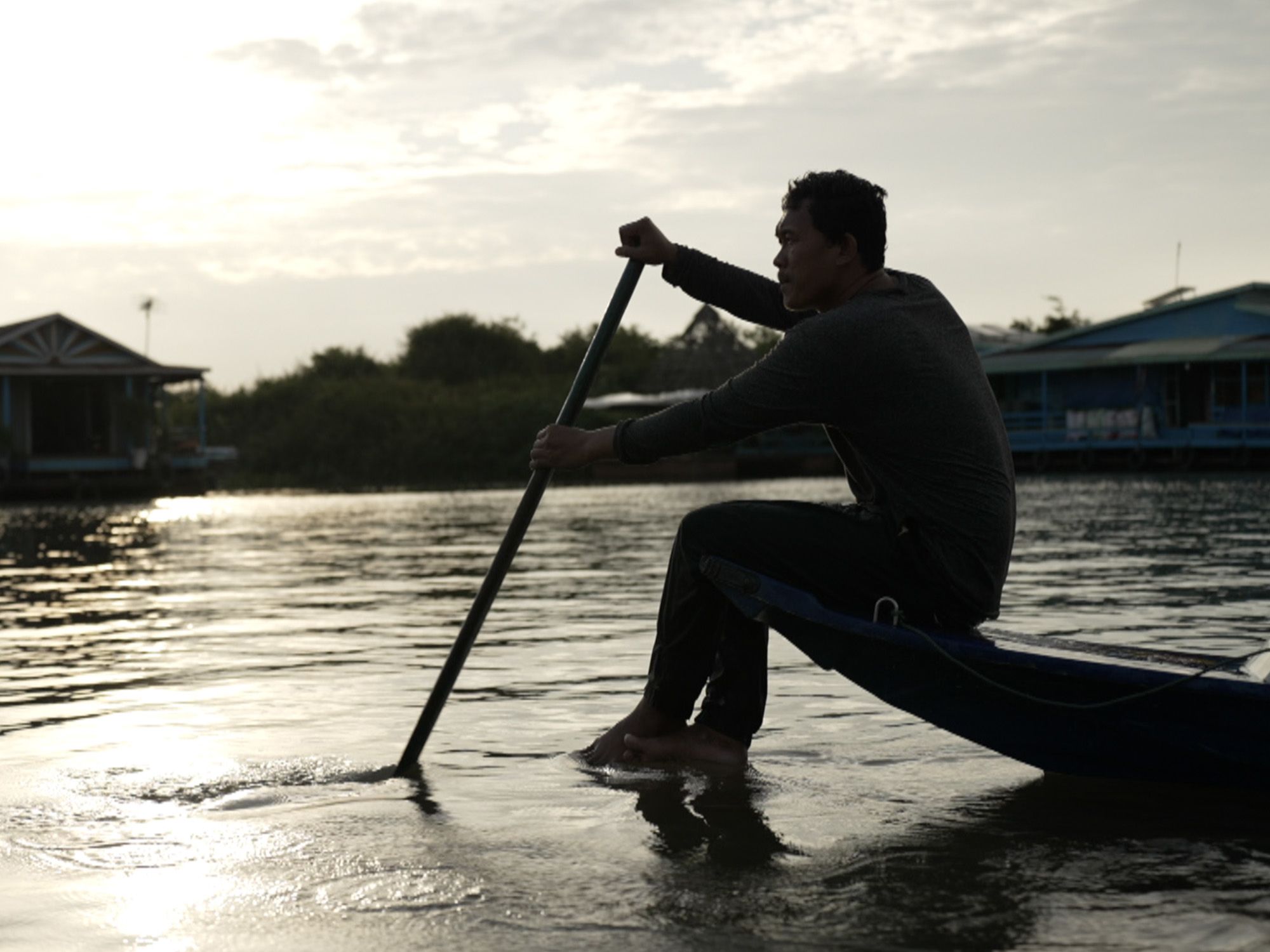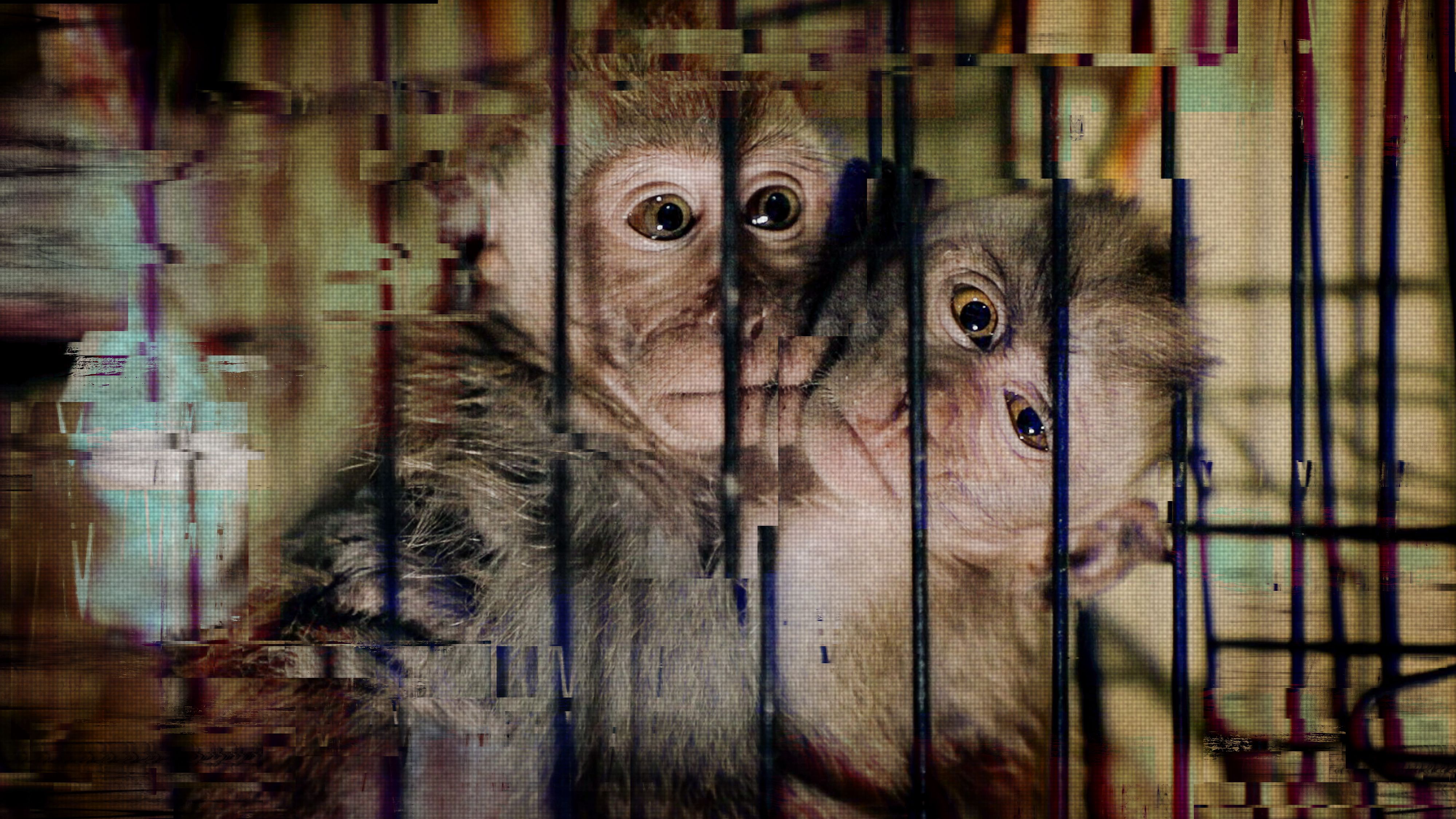
The Mekong is slowly dying.

The Mekong is slowly dying.

A warming world and hydropower dams are destroying one of the world’s richest ecosystems - and threatening the millions of people who rely on it.

A warming world and hydropower dams are destroying one of the world’s richest ecosystems - and threatening the millions of people who rely on it.

Can the once-mighty river be saved?

Can the once-mighty river be saved?

By Laura Bicker
Mai takes a deep breath before disappearing below the muddy brown waters of the biggest freshwater lake in South East Asia. A few bubbles rise to the surface - the only sign that he is underwater, freeing his fishing net, which he had left hanging between trees in a flooded forest.
The Tonle Sap, which takes its name from a tributary that connects it to the Mekong River, is the world’s largest inland fishery - more fish are usually caught here than in any other lake on Earth.
But when Mai finally surfaces, pulling leeches off his neck as he drags his net back to his small blue boat, he knows he hasn’t got the catch he needs. By now it’s dawn. The air is already clammy, as the trees begin to vibrate with the chorus of cicadas.
“I felt around the net and I couldn’t feel many fish,” says Mai, his head in his hands.
The disappointment is too much and he struggles to continue. He manages a few more words: “It’s taken four or five days and that’s all I get. I have no fish to sell.”
“These past few years there has been less and less water and fewer and fewer fish.”

The Tonle Sap has supported generations of fishermen in this part of Cambodia. Locals, including Mai, recall a time when fish simply jumped into the boat. Mai remembers his father placing bait in the boat overnight - and, come morning, there would be enough fish for breakfast.
A new study suggests an alarming decline in fish populations in the lower Mekong, including the Tonle Sap. Scientists across the world recently analysed 110 fish species over 17 years and found their numbers had dropped by more than 87%. The giant catfish, one of the world's largest freshwater fish, and revered by some locals, is believed to be on the verge of extinction - while the striped catfish, once a staple in countries along the Mekong, is now endangered.
While overfishing is one culprit, so are climate change and dams, which are altering the Mekong and its tributaries in fundamental ways.
The effect is evident here on the Tonle Sap, known as the beating heart of the Mekong.
It is September, the height of the wet season between June and October - or “high water” as Mai calls it. It’s when the monsoon rains flood the Mekong, and the river picks up speed, bringing with it migrating fish, which eventually arrive in the lake.
That happens because the quickened pace forces the Mekong’s swollen tributary, the Tonle Sap River, to flow upstream and fill the lake. And then in the dry season, the opposite happens - the flow from the lake reverses, pushing the fresh water all the way south to Vietnam.
These cyclical changes have given the Mekong its nourishing pulse. It is how the river system carries soil, fish and nutrients across six countries, supporting fertile deltas and fragile ecosystems.

But now, there are signs that this pulse is weakening - and, as the life drains from the Mekong, Mai has become a casualty of its slow death.
For the 38-year-old, fishing is survival. He needs his nets full of squirming fish to feed his family. He needs extra to be able to afford to send his three children to school.
“These past few years there has been less and less water and fewer and fewer fish,” he says as the tails of a few small silver fish, no bigger than his hand, thrash in the bucket at his feet.
Most are local mud carp or trey riel, which Cambodians crush, dry and ferment to make a paste called Prahok. The fish is so important in Cambodian culture that the currency is named after it.
“Every morning I need around 20,000 riel (about $5 or £4) to pay for my children to go to school. But these days I have no income."
He picks up his oar to paddle back to his floating house. Mai has no land. Like hundreds of others on the edge of the Tonle Sap, he has built a home with wood, bamboo and aluminium panels. It floats on oil drums and moves as the lake ebbs and flows, from wet season to dry.

Mai takes his boat out on the Tonle Sap
Mai takes his boat out on the Tonle Sap

Mai takes his boat out on the Tonle Sap
Mai takes his boat out on the Tonle Sap
It was always a difficult life, but two decades ago, Mai earned enough from his twice-weekly catch to be comfortable. He also tried to earn extra cash by ferrying tourists around the lake. Then, the pandemic hit and there were no tourists for three years.
Now, he says he wants this way of life to end with him.
“My children, I want them to study, and finish school. I will send them to learn a language and find a job. I don’t want them to live here on the lake,” he says, clenching his jaw to avoid the tears falling again.
“No matter how hard it is to earn – I have to try so my children can finish school.”

Mai's wife prepares food at home
Mai's wife prepares food at home

Mai's wife prepares food at home
Mai's wife prepares food at home
Mai returns home just as the rest of the floating village is coming to life. Children swing on hammocks as they brush their teeth, fish sizzle on fires and people flag down a boat carrying supplies usually sold in a convenience store.
Mai’s wife picks through the bucket to find fish for breakfast, throwing away the snails and inedible river crabs. Someone in a nearby house turns on the local radio station and the opening drumbeat of a Taylor Swift hit cuts through the chatter. It’s Cruel Summer.

The Mekong flows for nearly 5,000km (3,100 miles) from Himalayan glaciers in Tibet, through China, Laos, Myanmar, Thailand and Cambodia before reaching the South China Sea in Vietnam.
Its fast and powerful flow earned it the title “mighty Mekong”. As the planet heats up, successive droughts are diminishing this mighty flow.
Between 2019 and 2021, water levels dropped to their lowest in more than 60 years. But shrinking rainfall is not the only problem.
The Mekong flows through some fast-growing economies. They are all thirsty for energy to sustain growing industries and to supply electricity to some of the world’s poorest homes. The biggest consumer is China.

In a bid to cut its reliance on coal, Beijing built 11 hydroelectric dams on the mainstream of the Mekong, which it calls the Lancang, and more than 95 dams on tributaries flowing into the river. Hydropower now accounts for nearly 80% of the electricity in China’s south-western province of Yunnan.
Laos has two hydropower plants on the Mekong mainstream, partly funded by Chinese companies. Both countries plan to build dozens more.
The Mekong flows through some fast-growing economies. They are all thirsty for energy to sustain growing industries and to supply electricity to some of the world’s poorest homes. The biggest consumer is China.

In a bid to cut its reliance on coal, Beijing built 11 hydroelectric dams on the mainstream of the Mekong, which it calls the Lancang, and more than 95 dams on tributaries flowing into the river. Hydropower now accounts for nearly 80% of the electricity in China’s south-western province of Yunnan.
Laos has two hydropower plants on the Mekong mainstream, partly funded by Chinese companies. Both countries plan to build dozens more.
Energy demands in South East Asia have increased by an average of 3% each year - a trend that will continue until 2030, according to the International Energy Agency. Laos sees this market as one way to drag itself out of an economic crisis. It hopes to become the “battery of South East Asia”, selling much-needed renewable energy to its neighbours.
The Mekong River Commission, an intergovernmental body that advises all six countries but has no enforcing power, estimates that the dams can produce and sell about $4bn (£3.26bn) worth of power a year. But the ecological cost might be too steep.
“Climate change and dams are working together to deliver a death of a thousand cuts to the river system,” says Brian Eyler who runs the Mekong Dam Monitor at the Stimson Center in Washington DC.
Although the dams eventually release the water, analysts believe that trapping it behind concrete in reservoirs is disrupting the Mekong’s pulse, strangling one of the world’s most diverse ecosystems.
Water is also released from the cascade of dams in China and Laos at different dates and times, often making it difficult to predict water levels downstream, particularly in the north of Thailand and Cambodia.
“Rainfall that typically would fall during the wet season is much lower than normal, but at the same time, upstream dams are restricting water during that wet season. So that's bringing the river pulse down, and the river flows down much lower than they need to be,” Mr Eyler says.
“Together, climate impact and dam restrictions are changing the way that the Mekong flows - much for the worse.”

“This home is my soul. I’m deeply sad about losing this village.”

Only the skeletons of bamboo houses remain standing in the former village of Kbal Romeas in north-east Cambodia, near the border with Laos.
But 18-year-old Bopha still remembers every detail about her village as the boat moves through beds of water lilies that have taken root in the still water.
“That was the pagoda, there’s the school, and that is my house there next to that tree.”
The creation of a dam and reservoir flooded large areas in 2017, including Bopha’s village, and the surrounding fields and forests.
She and thousands of others from the indigenous Bunong community were forced to leave their homes on the banks of the Srepok River, which flows into the Mekong.
The Bunong way of life is intimately tied to their ancestral lands, but the flood has dispersed much of the community. Some accepted compensation or resettlement fees and moved to a purpose-built village away from the river. Others, like Bopha, have defiantly built a small community - as close to their former village as they could get.
Getting there by land involves a bumpy ride on a makeshift tractor through deep mud for nearly two hours from the nearest main road. Bopha has a mobile phone, which she carefully places near the back door of her house - one of the few places in this remote settlement where she can get a signal. She has a one-year-old daughter who loves to follow her - even when she is cutting wood for the fire with a large knife. Their new family home does not benefit from the dam’s electricity supply.

Bopha looks after her one-year-old daughter
Bopha looks after her one-year-old daughter
“Back then, we were happy,” Bopha says. “There was enough food to eat. Now, it’s hard to find food.” Living on the fertile riverbank, flanked by the water and paddy fields, the self-sufficient community grew their own food or they fished. Both are difficult in their new home, which is further from the river.

Bopha’s old home is an hour’s boat ride from her new house. The boat is moving slowly, but she grips the side. Although she has lived by water all her life, she cannot swim. It navigates a maze of dead trees, stripped of life by the flood.
“Seeing it looking like this, it hurts,” she says. “I can’t help all these trees, I can only help myself.”
She says it’s still hard to let go of the place where her ancestors lived: “Even their ghosts don’t want to leave this village.”
“This home is my soul,” she says. “I’m deeply sad about losing this village.”
She is here to visit her grandfather's grave to pay her respects. She sits up front, desperate to spot any familiar landmarks. Each year the water claims more of the past.
“You can usually see the old grave pillars,” she says as the boat engine slows further. “Now they have disappeared. All under the water.”
She settles on making her offerings on a fence post - as near to the old grave site as she can remember.
She lights the incense sticks she has brought and, as the fragrant smoke curls towards the sky, her voice drops to almost a whisper.
She switches from Khmer to her native tongue - Bunong - and calls out to her ancestors’ spirits and offers them her blessing.
The Cambodian government says the Lower Sesan II dam, which displaced Bopha, is living up to its potential. It provides 20% of the country’s electricity. Some researchers doubt this figure and say production from the dam is limited, especially in the dry season.
“I've talked to high-level officials in Cambodia, who have expressed a lot of regret over that particular dam,” says Mr Eyler of the Mekong Dam Monitor.
“Upstream of that dam where the reservoir flooded, the fisheries of that area were entirely wiped out.”
In 2020, the Cambodian government placed a 10-year moratorium on building dams on the Mekong mainstream, although it has not ruled out more hydropower developments elsewhere.
The minister of mines and energy announced last month that the country hoped to move towards solar and wind power. Hydropower has proved unreliable for Cambodia because of recent water shortages and low river levels. Even after importing electricity from neighbouring Laos, Vietnam and Thailand, blackouts in urban areas are common.
Across Asia, hydropower output in 2023 has plunged at the fastest rate in decades, forcing power regulators battling erratic weather to rely more on fossil fuels.
Ideally dams can secure a steady supply of energy, but Mr Eyler believes the region needs to rethink its energy policy.
“The technology for power generation has changed a lot over the last 20 years. These dams should not be seen as a modern solution for modern problems, particularly given the impacts they deliver to poorer communities.”
The dams upstream are not just trapping water, but also rich sediment, according to several studies, including one by the Mekong River Commission, and that is starving the Mekong of essential nutrients.
The waters of the Mekong are muddy brown not because of dirt, but because of nutrients that the river picks up on its journey south. Fish and farmlands all the way to Vietnam need that sediment not just to survive, but to thrive.
If no action is taken now, the amount of sediment reaching the river basin could fall by more than 90% by 2040, according to the Mekong River Commission.

This could have a devastating effect on the river - on Mai as he tries to feed his family, on Bopha as she tries to build a new life, and the more than 60 million others who depend on this flowing lifeline.
That danger is now fuelling determination among a younger generation of Cambodians. They want to save the Mekong, or at least protect the river that is called “the mother of water” in the many languages spoken along its banks.
They cannot solve climate change, nor can they prevent dams being built upstream in Laos or China. But they can try to save the fish from illegal and unregulated fishing - especially the fish that do make it downstream to the unique flooded forest habitats in the north of Cambodia.
These protected forests have adapted over hundreds of years to the two seasons - months of dry weather followed by months of monsoon rain. However, the gush of water from upstream dams during the dry season gives the forest no time to dry out. When this happens, fungi grow in the damp conditions, causing dry rot.
This, in turn, has an impact on the fish - because the submerged yet healthy roots are a safe haven for fish to spawn. The ecosystem around the roots also provides food for the fish.


“I want to preserve this river for the next generation,” says 19-year-old Meta, rowing at the front of his boat as he patrols the river in the dark.
He is among a group of young people in Stung Treng province, most of them teenagers - they quietly navigate in the dark, turning on their torches and scouring the banks for fishermen who might be using dynamite or electrocution to illegally kill hundreds of fish.
“If we come across any illegal activity, we have to drive the boat fast to chase them.”

They have volunteered for the night shift as part of a patrol run by the Cambodian Culture and Environment Preservation Association (CEPA).
“If those illegal fishing activities increase, villagers won’t be able to get enough fish for them and their family,” Meta says.
This work can make the patrollers unpopular. Fishermen often turn to illegal methods when they are desperate to earn money.
Meta, who makes sure to bring a knife with him on patrol, admits he was scared on his first shift. “If we come across any illegal activity, we have to drive the boat fast to chase them and sometimes I fear the boat will capsize. I was also worried that some of them would be armed - what would I do?”
When weaving through the flooded forest, the team switches from oars to the boat’s engine because the river is swollen from the monsoon rains and the current swirls around the tree roots. But as they try to head upstream, even the engine struggles.
They say it is important to guard the river at this time because this is when the fish spawn and grow.
“When I was young, whenever I went to the river with my father, I felt so happy seeing the wide river,” Meta says.
“Now, when I look at the river it makes me feel like I want to protect it - because it is almost gone.”


Meta and his team patrol the river at night
Meta and his team patrol the river at night


Meta and his team patrol the river at night
Meta and his team patrol the river at night
Human development, coupled with a changing climate, will continue to alter the course of the Mekong River - and the lives of those who live along it.
But its flow has not yet been stilled. Younger guardians of the river like Meta are a sign of hope.
All six governments along the river have also recently pledged to start co-ordinating on water flow and dam building.
The fate of the river may depend on the resilience of the people it supports. And how far they are willing to go to defend it - and to restore that famous might to the Mekong.

Watch Laura Bicker's Our World documentary, Saving the mighty Mekong river on BBC iPlayer and the BBC News Channel, from 18 November 2023
Listen to the podcast The mighty Mekong’s last hope on BBC Sounds

Credits
Author: Laura Bicker
Stills and videos: Thomas Cristofoletti & Danny Bull
Graphics: Lilly Huynh
Producer: Lindle Markwell
Editor: Aparna Alluri
Online Producer: James Percy
Published: November 2023


